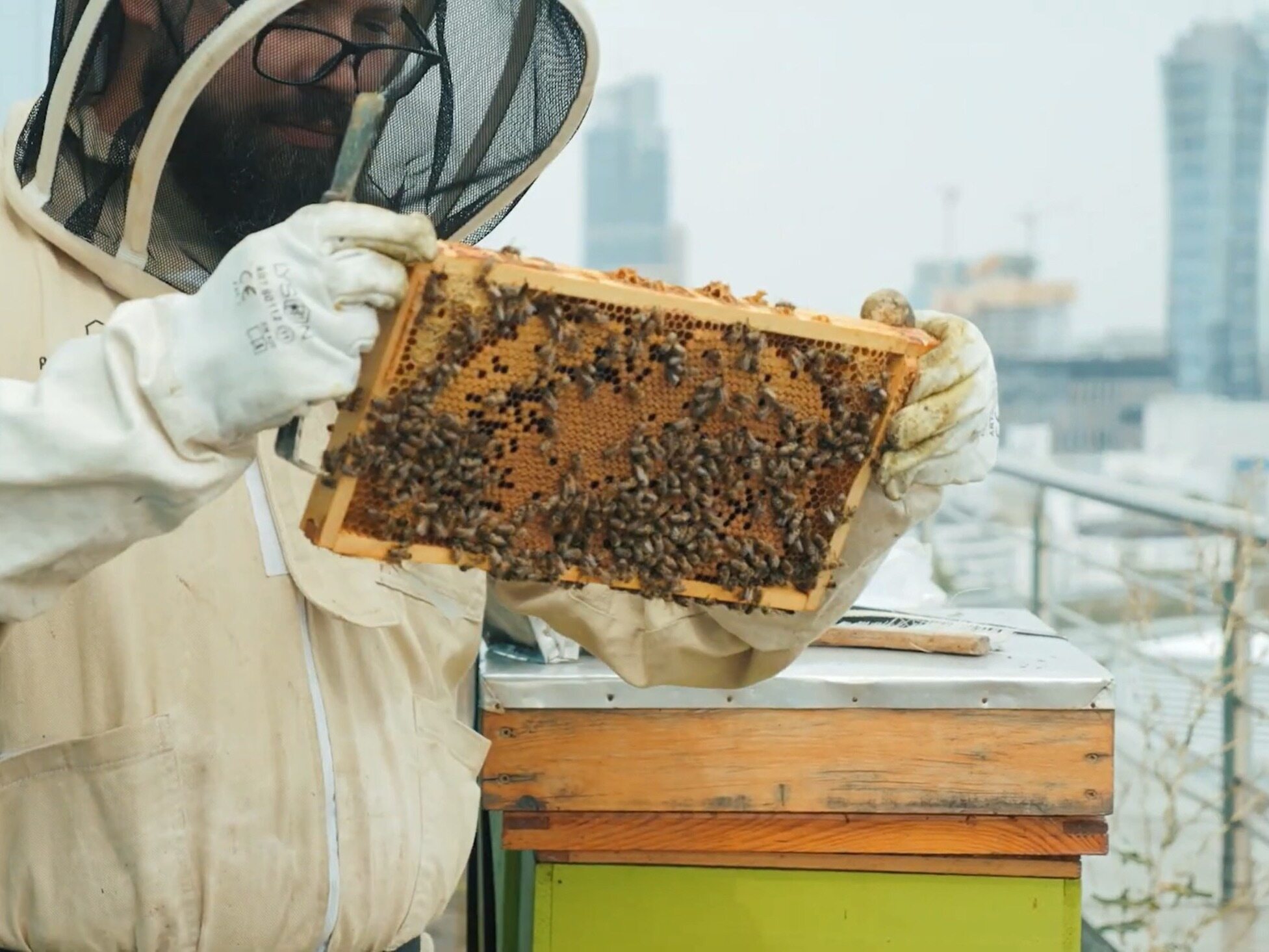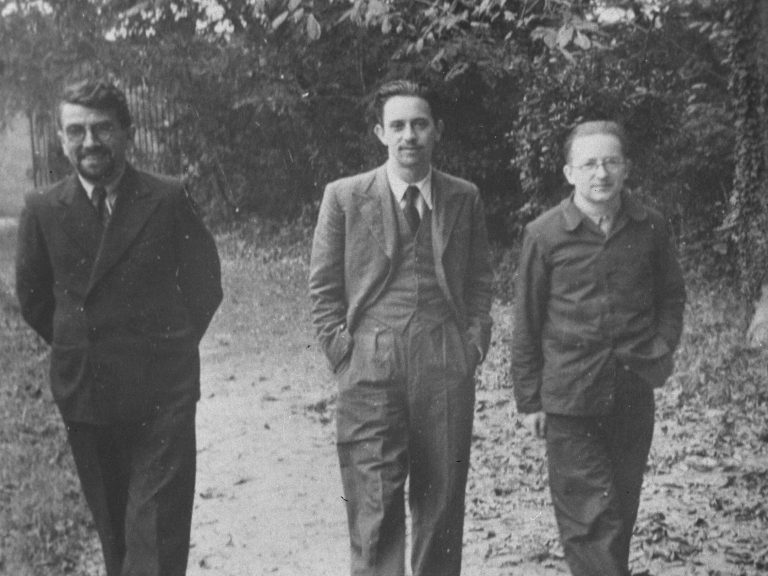This is how beekeepers obtain honey from urban hives. “The city is a special place for bees”

The beekeeper’s apiary has been building apiaries in Warsaw and other Polish cities for years, including: on the roofs of office buildings and shopping malls. To see what urban beekeeping is all about, we visited several apiaries and a beekeeping workshop as part of the “Science is a Polish specialty” series.
Pszczelarium placed its first city hives in 2014 in Warsaw. Since then, the company has established apiaries in many cities throughout Poland.
– Pszczelarium is a company that deals with beekeeping in the city – tells us Michał Cyglicki. – In Warsaw alone we have 46 apiaries. 189 bee families live there. Each colony is from 40 to 80 thousand bees. It can be said that we have quite a lot of creatures to care for under our wings – he emphasizes.
They collect honey and pass on knowledge about bees and urban beekeeping
– We take care of bees, collect and package honey – says Michał Cyglicki. – We cooperate with private companies and city districts, including: with the Bielany district, the Włochy district. Companies order a service from us, which consists in setting up an apiary, taking care of the bees and delivering honey in the quantities requested by the client – he explains.
The activity of the Beekeeping Center is not limited only to obtaining honey. – We also educate the public about bees – indicates an employee of the Pszczelarium and talks about workshops organized by the company, addressed to both the youngest children from kindergartens and adults, including workshops for companies.
– We organize, among others: various types of beekeeping workshops, courses, open positions, events such as honey harvesting, where residents of given districts can come to us, put on a beekeeping jacket, open a hive with us, pull out frames and carry out the entire honey harvesting process from beginning to end. Be brave and see bees from a slightly different perspective – he lists. – You can see the bees up close. As a rule, we have glass hives with us, in which you can see the structure of a bee family, what a queen bee, worker bees, drones look like – he adds.
The apiary also teaches beekeeping. – We organize basic courses, intermediate courses for people who would like to try an adventure with beekeeping. However, due to the fact that they live in the city, it is not necessarily easy for them to start. We create such an opportunity because we have facilities in the form of our workshop, where these people can come and experience beekeeping for themselves – he points out. “It’s a decent background to be able to run an apiary on your own later,” he adds.
What is the difference between urban beekeeping and traditional beekeeping?
We also asked a representative of the Beekeeping Center what is the difference between beekeeping in the city and beekeeping in rural areas.
– Generally, the bee season is determined by the biology of bee colonies. It is not much different from the one in the countryside. Urban bees are no different from rural bees, says Michał Cyglicki. – However, due to the fact that we operate in a place where we have a much higher population density, we must act much more carefully and we must run such apiaries in a controlled manner – he adds.
In Warsaw, the first honey is taken from the hives at the turn of May and June. – Then we usually collect chestnut honey with an admixture of various other nectars of plants that are in the city – explains the representative of the Pszczelarium.
And how do you know what type of honey is in the hives? – You can look at which plant blooms in a given period. If the chestnut tree blooms profusely, we expect the honey to be chestnut-colored. But we can be fooled this way. It’s worth learning some science at this point. There is a field called melisopalinology, which deals with the analysis of pollen – explains Michał Cyglicki. – We collect a sample appropriately and send it to a laboratory that tests the pollen content in the honey. In such a laboratory, the sample is further prepared on a microscope slide, and there a specialist in this field calculates the statistics of individual pollens – he adds.
On the basis of which pollen dominates (although with some plant species it does not have to be the most pollen), you can determine the taste of a given honey.
How do you know when the honey is ready to be harvested? – We look at when a given plant will stop blooming. This is the first signal for us to see whether we will be able to collect specific honey from a given plant. Then we visit the apiary and see what the honey looks like in the hive. If it is not poured out of the frames and is sealed, i.e. covered with a delicate layer of wax, we know that we can take it away from the bees. However, if it is pourable, has a very watery structure, then we know that we should not take it, because it is still immature – indicates the beekeeper.
Beekeepers can also use another, more scientific method to check the readiness of honey. – We can use apiary scales. These are the devices on which we build the street. This scale practically constantly monitors the weight of the hive. When we see an increase in weight, we know that the bees are constantly bringing nectar and turning this nectar into honey. However, when the weight suddenly begins to drop, it means that the bees start consuming the honey. Then we can collect the honey, of course also checking whether it is ready – he points out.
“The city is a special place for bees”
Urban honey does not have any special properties. But the difference is in the variety of plants from which it is made. – We have an abundance of chestnut trees in the city, which we do not have in the countryside. We have meadowsweet, hawthorn, acacias, linden trees – lists the beekeeper. – What is most important in urban honey, in my opinion, is taste. He is completely different. It is highly aromatic, herbal, slightly citrusy. You have to try it, because it is something that distinguishes urban honey from rural honey – he emphasizes.
An employee of the Pszczelarium also points out that city honey is one of the purest honeys that can be obtained. – The problem of smog occurs mainly in winter, when bees do not work, while in summer, when bees fly around flowers and collect nectar, the problem of smog is practically negligible – he points out. – At many meetings we were asked if this honey was clean. This provoked us to simply examine it. And we tested honey, as well as pollen for the content of heavy metals, e.g. cadmium and lead – indicates that the amounts of heavy metals were at the limit of detection of devices, which means that there can be no talk of contamination.
– And there is not one thing in city honey that happens in country honey. No pesticides, because here we do not have large-scale agricultural areas, where the farmer may not harvest the crops he would like without them. In the city we have clusters of plants on a smaller scale, but we have a lot of them – he adds.
As an employee of the Pszczelarium points out, contrary to appearances, there are many places in the city where bees can look for food – numerous parks, squares, green areas by the tracks and many others.
– The city is certainly a unique place for bees because, on the one hand, it is a heat island. This translates into several important issues. One of them is the length of flowering time of individual plants. If plants have more time to bloom and nectar, it is certainly positive for bees – points out Michał Cyglicki. – The second thing is a varied diet. If bees collect pollen from one large plantation, for example rapeseed, and something like this can be found in agricultural areas, we have a monopollen, unvaried diet. In the city, bees have a very large selection when it comes to pollen. Scientific studies show that if bees have a varied diet, their immune system works much better. And this translates directly into their resistance to various types of diseases – he adds.
The beekeeper also points out that in a monoculture environment, a bee has a huge supply of pollen at one point, but at other times of the year it feels like a desert. – In the city, however, due to the great diversity of flora that occurs here, this nectar sanctuary is quite continuous, homogeneous and there is quite a lot of it. Also, when it comes to meeting nutritional expectations, bees can definitely treat the city as a plus – we hear.
The city itself also benefits from the presence of urban streets. “First of all, we bee them,” says Michał Cyglicki. – When it comes to the presence of bees in the city, the city has a positive effect, we see flowers being pollinated. Thanks to this, the diversity of these plants can be preserved all the time. All the more so because cross-pollination between individual plant individuals allows these plants to develop much better – says the beekeeper. – Thanks to the fact that bees are in the city, the biodiversity of the flora does not disappear. New trees, new plants are the main goal of bees in the city – he sums up.






